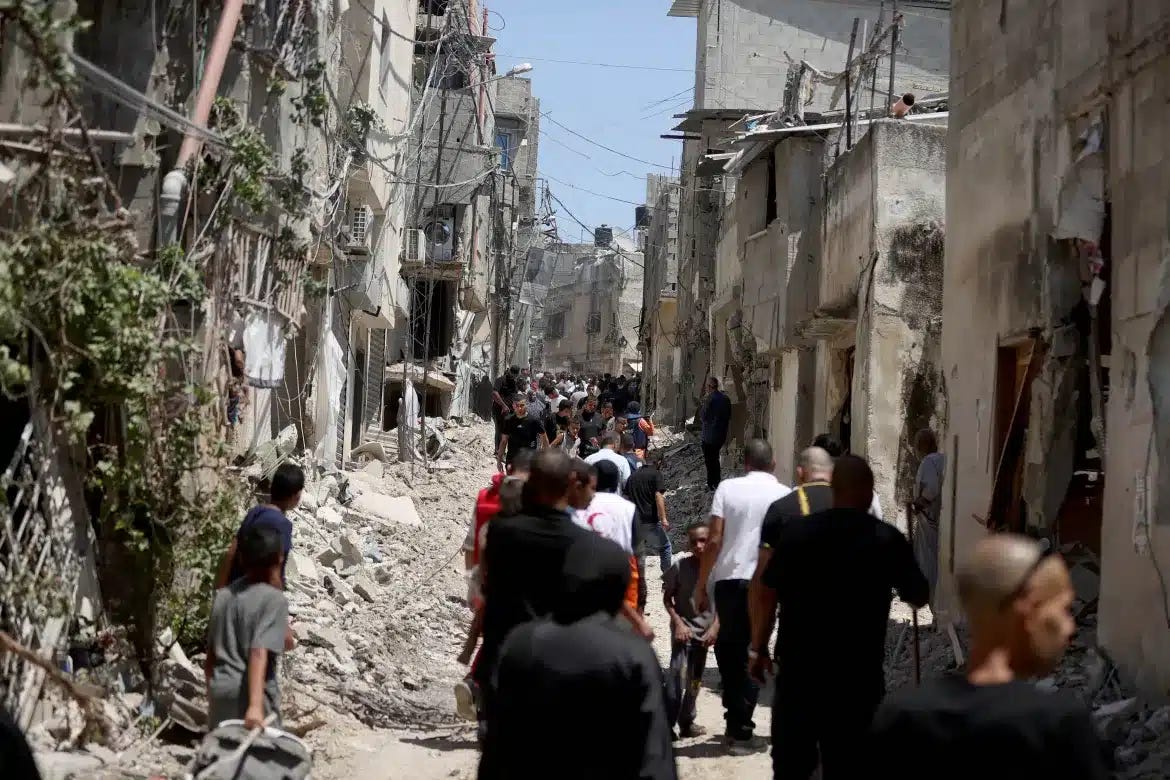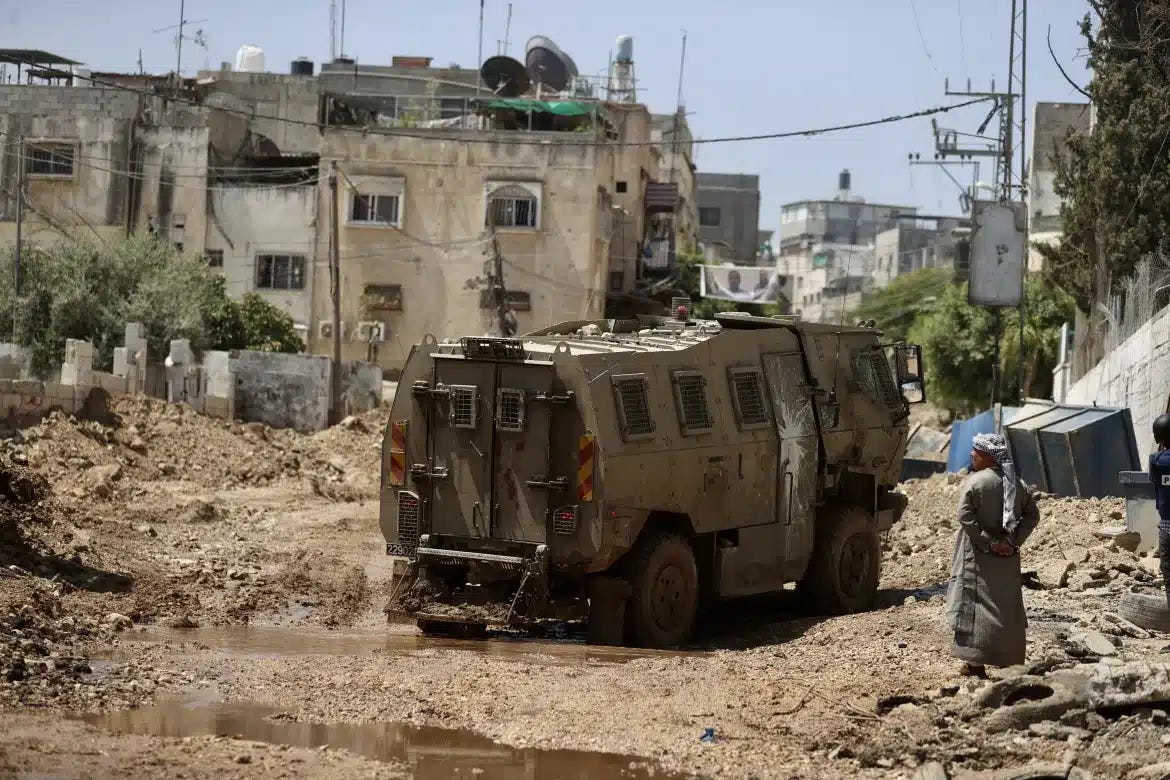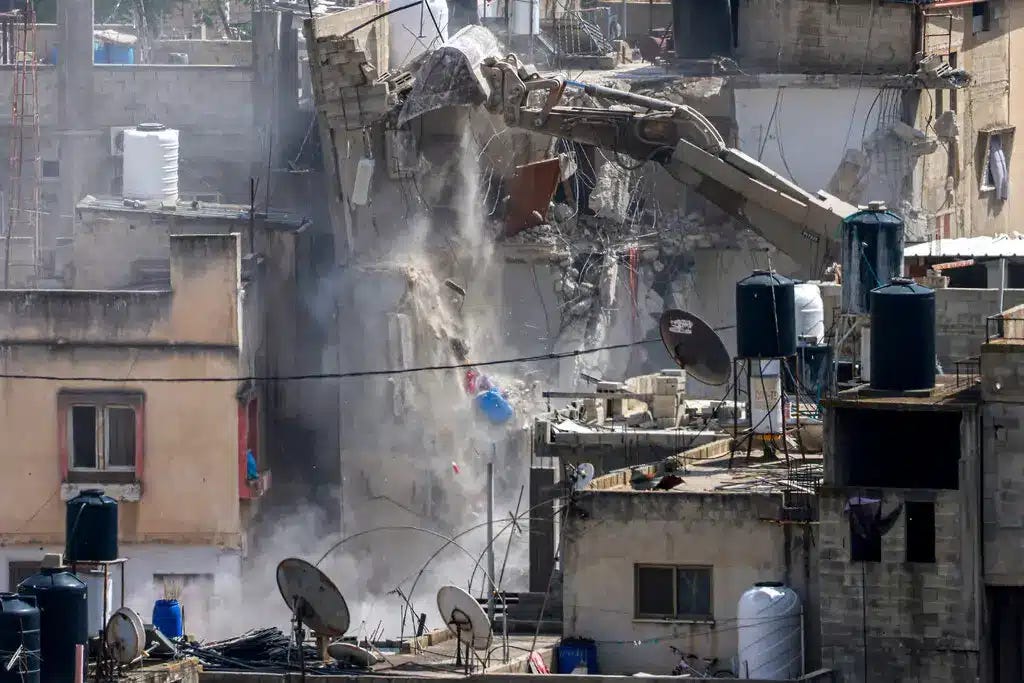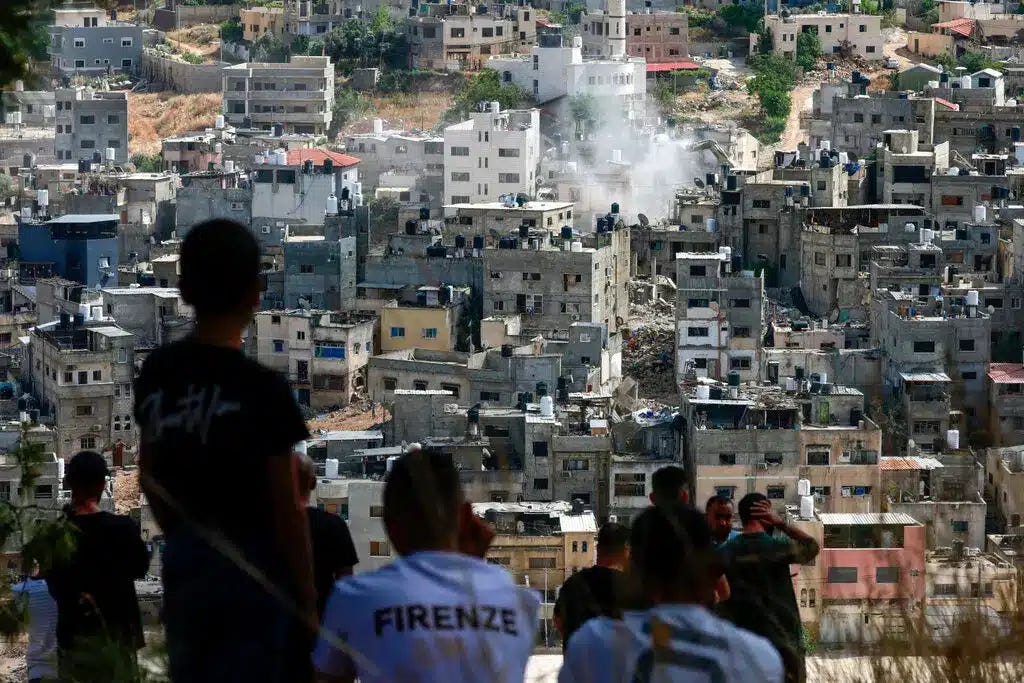After more than 165 days of relentless Israeli assaults on the Tulkarm refugee camps, attention is shifting to what lies ahead for the camps of the northern West Bank—now under the most extensive military campaign the territory has seen since Operation Defensive Shield in 2002.
The camps, particularly Tulkarm and Nur Shams, have endured unprecedented measures: the forced displacement of thousands, widespread destruction of homes and infrastructure, and the systematic erasure of the camps’ physical and symbolic features.
This strategy has moved beyond traditional military objectives to fundamentally reshape the demographic and spatial landscape of the region.
Amid this escalating crisis, a pressing question emerges: What exactly is being planned? This concern has dominated conversations among camp residents and observers alike, especially following the unexpected visit of U.S. security coordinator Michael Fenzel to Nur Shams.
A move interpreted in light of Washington’s efforts to broker a new security arrangement that aligns with Israeli demands while winning acceptance from the Palestinian Authority (PA).
Camps Under the Blade
Since the launch of Israel’s military operation “Iron Wall”—now entering its sixth month—heavy machinery, led by D9 bulldozers, has relentlessly reshaped the camps in northern West Bank, particularly Tulkarm and Nur Shams.
These ground incursions were preceded by intense shelling, marking the first use of tanks in the West Bank in years, alongside airstrikes and sweeping evacuation orders. The scale of these actions makes clear that the goal extends beyond dismantling armed resistance: the campaign seeks to reconstruct the physical and political identity of the camps.
While the military escalation intensified significantly in January 2025, the groundwork was laid in 2023, when Israel’s military adopted a new strategy during its incursions into Jenin. That strategy included targeting infrastructure, bulldozing streets, and deploying drones to widen the scope of attacks—a model now replicated across other camps.
Israel’s aim is increasingly explicit: to transform the densely built, narrow alleyways of these camps—long a challenge for Israeli forces—into open, securitized zones where military operations can proceed freely.
This approach, dubbed “security engineering” by Israeli officials, entails demolishing residential neighborhoods, carving out military access routes, establishing surveillance outposts, and intensifying drone usage. The result is a significant reduction in the ability of Palestinian factions to use these camps as operational bases or community strongholds.
Yet more alarming than the physical devastation is the campaign to dismantle the camps’ symbolic and political identity. Longstanding testaments to the Nakba and key pillars of the Palestinian refugee cause, these camps are being reengineered into ordinary residential areas, stripped of historical resonance and brought under tighter Israeli control.
The Israeli military has openly stated its intent to “reshape” the camps of Jenin, Tulkarm, and Nur Shams into areas that are easier to govern. One military spokesperson said the goal is to enable “freedom of movement” and prevent future attacks.
According to the Palestinian news agency WAFA, over 600 homes have been completely destroyed in Jenin alone, along with the opening of 15 new roads. In Tulkarm and Nur Shams, at least 400 homes have been razed and more than 2,500 damaged. Both camps remain sealed off, resembling ghost towns.
Estimates indicate that some 40,000 Palestinians have been forcibly displaced, barred even from retrieving essential belongings.
The U.S. Coordinator Visits Nur Shams
A visit by U.S. Security Coordinator for the West Bank, Michael R. Fenzel, to the Nur Shams camp sparked widespread outrage. Accompanied by a Palestinian delegation including the Interior Minister and Tulkarm’s Governor, Fenzel toured the heavily damaged camp amid rising tensions and repeated Israeli incursions—timing that many residents found deeply provocative.
The American and Palestinian delegation surveyed the destruction left by Israeli forces. However, residents voiced staunch opposition, calling the visit a hollow gesture. The head of the camp’s Popular Services Committee declared: “The occupation is destroying our camp.

We refuse to receive the American envoy. What we need is for the occupation to leave and for our people to return to their homes.”
Tulkarm Governor Maj. Gen. Abdullah Kamil made a revealing statement: Fenzel had informed him that the Israeli military campaign in Nur Shams had concluded. “Israel told the Americans that it achieved its objectives and halted the demolitions, but military forces remain,” Kamil said.
He added that Israel continues to ban any rebuilding of the roads it carved through the camp, warning of airstrikes should any construction resume. “So what are we supposed to do?” he asked.
On reconstruction, Kamil stated: “Our demand is clear: the occupation must rebuild what it destroyed.” He said this demand was conveyed directly to Fenzel, who responded with promises of U.S. funding for infrastructure projects like water, electricity, and sewage systems.
Commenting on the meeting, Kamil said: “As the Palestinian Authority, we’ll meet with any party that helps us achieve our goals. What matters is the Palestinian position, not the identity of the interlocutor. Whether it’s Americans or Europeans—if it helps alleviate our people’s suffering, we will proceed.”
Fenzel’s Plan: A New Phase of Security Coordination
Michael Fenzel’s recent moves revive attention to a U.S.-drafted security plan, formulated months before the eruption of the “Al-Aqsa Flood” in Gaza. The plan seeks to dismantle armed groups in the northern West Bank and reassert PA control over cities like Jenin and Nablus—now bastions of resistance.
As reported by Axios, the plan was presented to both the Israeli government and the PA during former U.S. Secretary of State Antony Blinken’s regional tour in February 2023, under the banner of “de-escalation.”
Leaked details indicate that the plan centers on creating a special Palestinian security force, trained intensively and deployed in the northern West Bank to dismantle militant networks. The plan was formalized at the U.S.-led Aqaba summit in Jordan, attended by President Biden’s Middle East advisor Brett McGurk and Assistant Secretary of State Barbara Leaf.
The Israeli delegation included National Security Advisor Tzachi Hanegbi, then-Shin Bet chief Ronen Bar, and military liaison Maj. Gen. Ghassan Alian. Representing the PA were Hussein al-Sheikh (now PA Vice President), intelligence chief Majed Faraj, and diplomatic advisor Majdi al-Khalidi.
However, the intensifying armed resistance and evolving battlefield dynamics post-“Al-Aqsa Flood” prompted revisions to the plan. The updated version moved away from unilateral PA control toward a model of joint operational coordination with the Israeli military.
This shift was evident in the PA’s “Homeland Protection” campaign in Jenin—a campaign that aligned more closely with Israeli military operations and paved the way for the Iron Wall offensive. The synchronization revealed a deeper layer to Fenzel’s plan: a comprehensive, U.S.-backed security strategy executed through coordinated roles between the PA and Israel.
This coordination continued as Palestinian security forces pursued militants who had fled to nearby villages, while Israeli forces maintained pressure within the camps. This seamless operational synergy reflects the essence of the revised Fenzel Plan: a collaborative dismantling of resistance through synchronized local and external efforts.
The U.S. Security Office: Custodian of Israeli Interests
Fenzel’s role today echoes that of his predecessor, Keith Dayton, who oversaw a formative phase of “security engineering” in the West Bank—dismantling resistance infrastructure and restructuring the PA’s security doctrine to serve Israeli interests.
Appointed in 2005 amid post-Intifada recalibrations, Dayton outlined his vision in 2007 to both the PA leadership and Israeli officials, parallel to peace negotiations between Mahmoud Abbas and then-Prime Minister Ehud Olmert.
Dayton’s role went far beyond advice or training: he directly supervised the dismantling of armed groups and reshaped Palestinian security ideology to view resistance as a threat requiring eradication.
This mission was partly a response to the lessons of the Second Intifada, during which many PA officers joined the fight, especially in the Fatah-linked Al-Aqsa Martyrs Brigades under the leadership of imprisoned figure Marwan Barghouti and with backing from the late President Yasser Arafat.
Dayton’s mission became a pivotal moment in the emergence of a “new” Palestinian Authority under Abbas—one that transformed not only its security apparatus but also the political structure of Fatah, eventually marginalizing factional activism and narrowing the Palestinian political space in the West Bank.
Fenzel’s plan appears to be a continuation of that project, tailored to today’s geopolitical realities and updated American demands. It envisions a “renewed” Palestinian Authority—reengineered politically and militarily to meet U.S. standards and secure limited authority in parts of the West Bank.
This comes as Washington attempts to strike a delicate balance: ensuring the PA remains a viable security partner without directly clashing with the far-right agenda of Benjamin Netanyahu’s government, which continues its policy of creeping annexation and settlement expansion.
In this context, the PA seems eager to demonstrate its relevance—politically and security-wise—by meeting international, particularly American and Israeli, benchmarks and reasserting its role as a “trusted partner.”
This agenda is reflected in a series of policy moves: from Abbas’s statements on disarming resistance groups, to decisions to disarm Palestinian refugee camps in Lebanon, and to Vice President Hussein al-Sheikh’s reinvigoration of security coordination in the West Bank.
These efforts signal the PA’s ambition to expand its role—especially in the “day after” scenario for Gaza—by positioning itself as the central authority capable of restoring order and adhering to the standards demanded by Washington and Tel Aviv.






